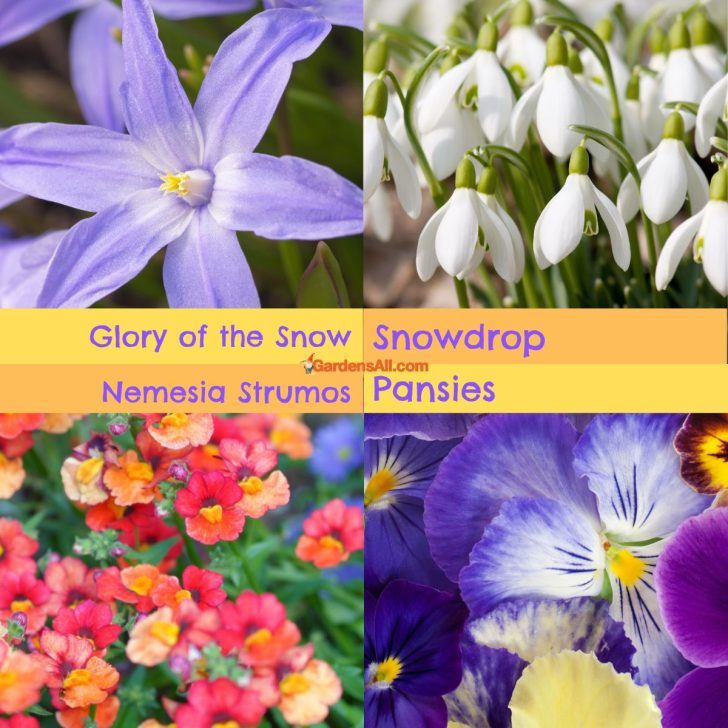The hardest part of writing an article on winter flowers is that the list of flowers that bloom in winter months naturally varies by growing zone. More than that, winter blooming flowers can vary even within the same hardiness zone depending on microclimates or seasonal changes.
Hardiness Zones Impact
Most of the flowers that bloom in winter are either late fall or early winter blooming. Others are late winter, early spring blooms, depending on your location and the kind of season you’re having. But there are many lovely winter flower options to consider.
So use this as a general guide to flowers that bloom in winter but always check for your specific hardiness zone before planning and planting your winter garden.
An annual flower in a cooler hardiness zone might be a perennial in a warmer zone
Winter-Blooming Flowers by Colors and Growing Zones
In the winter-blooming flowers lists that follow, we have one long list and then have broken that into smaller ones sorted by flower colors as well as by annual and perennial winter flowers. However, once again, an annual flower in a cooler hardiness zone might be a perennial in a warmer zone, so if you find conflicting information on plants here and elsewhere, that could be the reason.
When you add the options of late fall/early winter flowers, and late winter/early spring flowers, the options for floral color on barren winterscapes increase significantly. While some years you may not seem them in winter, you will see them come spring, often surrounded by snow and those first bright signs of spring are always welcome and well worth planting for extending your floral growing seasons, and bidding in the new ones.
So let’s get started with this list.
If you have any insight or feedback on your favorite winter flowers that aren’t on this and should be, please drop us a note with that flower name and we’ll be glad to add it.
When considering winter blooming flowers, keep in mind the variables of your specific hardiness zone.
LIST OF FLOWERS THAT BLOOM IN WINTER
- Aconite, Winter, (white)
- Buttercup, aka Winter Aconite, (yellow)
- Crocus
- Daphne Shrub
- Gloire des Rosomanes
- Glory of the Snow
- Hellebores
- Holly, English
- Holly, Winterberry
- International Herald Tribune
- Jasmine, Winter
- Nemesia
- Pansies
- Pheasant’s Eye
- Philippine Violet
- Pieris
- Snowdrop
- Sweet Pea
- Winter Aconite
- Winter Jasmine
Blue Flowers That Bloom in Winter
Pink Flowers That Bloom In Winter
- Hellebores
- Daphne Shrub, Winter Daphne
Purple Flowers That Bloom In Winter
Find our complete guide on purple flowers here.
Red Flowers That Bloom In Winter
White Flowers That Bloom In Winter
Yellow Flowers That Bloom In Winter
Roses That Bloom In Winter
Annual And Perennial Winter Blooming Flowers
Annual Winter Flower
Annuals in colder hardiness zones are often perennials in milder growing zones. So always determine each plant by your zip code’s hardiness, and if you’re having a hard time finding it, check in with your local agricultural extension service.
- Nemesia
- Pansy / Pansies – (biennials often planted as annuals)
- Sweet Pea
Perennial Winter Flowers
Perennials in mild hardiness zones are often annuals in colder growing zones.
- Aconite, Winter Aconite
- Crocus
- Daphne Shrub, Winter Daphne
- English Holly
- Gloire des Rosomanes
- Glory of the Snow
- Hellebore
- International Herald Tribune
- Jasmine, Winter Jasmine
- Pansy / Pansies – (biennials)
- Philippine Violet
- Pieris
- Snowdrop
- Winterberry Holly
Always double check hardiness for your specific area before planting. To check by zip code is even more reliable because of microclimates that can cause one area within a zone to vary. More than that, even your own yard can have microclimates.
For example, we can grow plants that are more sensitive against our southern facing stone exterior wall which offers protection from the other three directions while providing passive solar warmth.
“From December to March, there are for many of us THREE GARDENS: The garden outdoors, the garden of pots and bowls in the house, and the garden of the mind’s eye.”
~Katherine S. White, writer, editor, 1892-1977

FLOWERS THAT BLOOM IN WINTER
Images and Descriptions in Alphabetical order
Here are some visuals with descriptions and information on winter-blooming flowers from the lists above. We hope you enjoy this scroll through some of the hardy winter flowers that grace wintry landscapes with color and beauty from late fall to early spring.
We’d love to see photos of your winter-blooming flowers and add them here with tribute to you. Just send ’em on over with the name and any comments or information you’d like to add.
Aconite: Winter Aconite, AKA, Buttercup – Eranthis Hyemalis (Cilicica group), Zones 4-9
A member of the Genus Ranunculus, the Eranthis Hyemalis is a late winter, early spring blooming flower. Winter Aconite typically pops up even before Crocuses.
These bright yellow Winter Aconite, also known as Buttercups, offer lovely bright bursts of spring color and can even withstand snow.
Buttercups are deer resistant and easy to grow in humus rich soil. This Winter Aconite easily re-seeds, so if you don’t want it to spread, plant it in a pot.
Winter Aconite does best when planted outdoors in the fall but may also be propagated by seed and grown in a cold frame if you desire. Sow directly in the ground, or add to containers or raised flower beds.
See some lovely white fall aconite in this fall flowers article.


Crocus, Crocus Spp., Zones 3-8
These tiny little flowers are low maintenance, daintily beautiful, and surprisingly tough. They bloom in late winter and early spring, often popping through the snow in a lovely shade of light to dark violet.
Crocus are perennial bulbs that only grow to be six inches tall and one to three inches wide at their very most considerable. Because they are bulbs, they should only be started outdoors.
While crocuses are perennial, they are short-lived. Either replant every few years or dig up and divide bulbs as the plants attempt to spread. Move the bulbs to be at least three inches from the other plants for optimal results.
The spice known as saffron (C. Sativus) comes from the crocus plant. It is one of the most expensive and rare spices in the world; all gathering of the crocuses must be done by hand, and it takes 85,000 plants to produce one kilogram (2.2 pounds) of Crocus. Saffron is primarily used in luxury dishes such as paella.
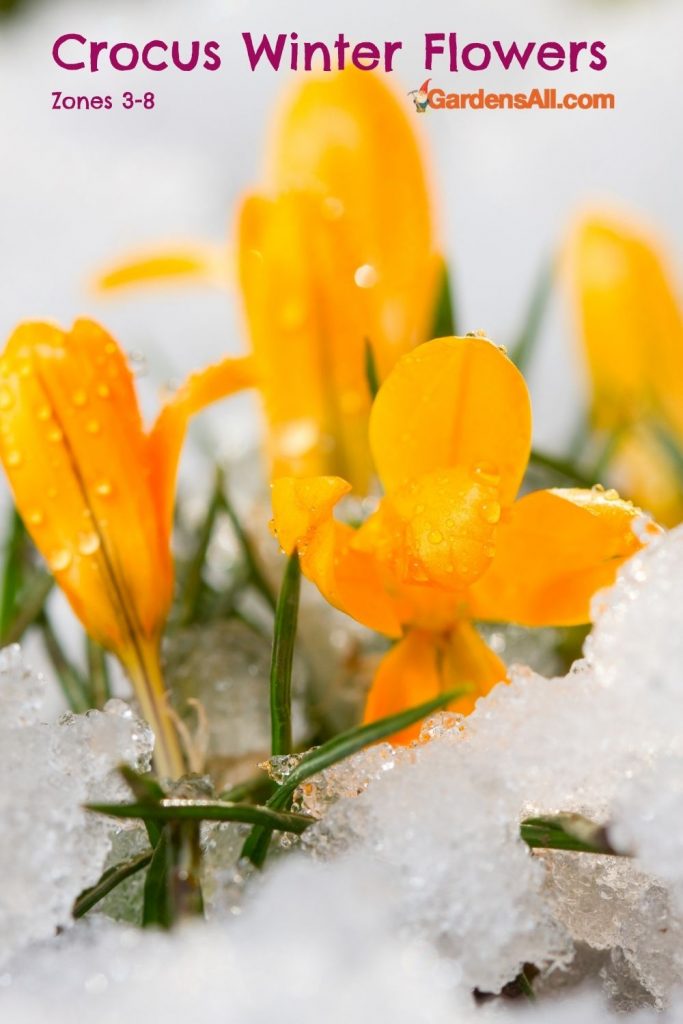

Winter Daphne Shrub, Daphne x Hybrids, Zones 7-9
This is one tough plant to grow, but once she does she has stunning blooms in late winter early spring.
Daphne takes a while to grow up and can need help along the way. Getting this perennial shrub to maturity is a trick, as they do not transplant well and can randomly die even after seeming to establish a bit. However, once they are mature, after seven to ten years, they become low maintenance, not needing much care, water, or pruning.
Daphne has white or pink flowers that bloom over winter and will grow to be one to five feet tall and two to six feet across.
Their quirkiness and picky behavior mean that these plants should be started indoors or within a greenhouse. They can be started outdoors, but the survival rate is much lower this way.
This fragrant variegated Winter Daphne Shrub, Daphne odora spp. ‘Aureo-marginata’, is a lovely addition near your patio or deck landscape! where you can enjoy the flowers and the fragrance, February-March. Plant near a southern facing foundation wall for a warmer microclimate to encourage earlier blooms.
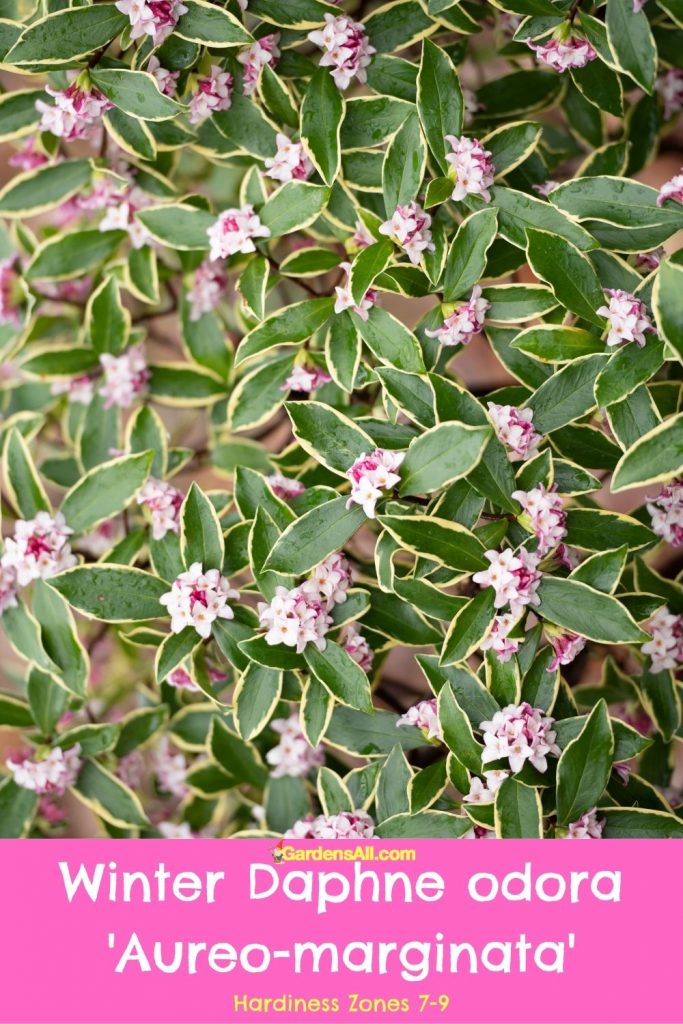
English Holly, Ilex Aquifolium, Zones 5-8 – for Bright Berry Color
While not winter blooming flowers, evergreen shrubs with bright berries are attractive plants to include in your winter landscape planning.
This massive, attractive evergreen perennial bush is the perfect addition to large gardens. Many people use them as backdrops for their gardens or as hedgerows.
English Holly grows to be approximately thirty-two feet tall and wide. While it is too big for containers as a fully mature plant, many gardeners keep them in pots as juveniles because they grow very slowly.
When grown in zones five through eight, these plants do their best and can be started indoors or outdoors as seeds or seedlings.
Also known as Common Holly or European Holly, English Holly blooms in the summer and produces berries in the late fall. These berries will stay on the bush throughout the winter, creating lots of color and interest in your outdoor space.
Folklore believes that holly can ward off evil. When all other winter flora looked dead, holly stayed bright green and red. It was common for people to cut sprigs of holly to bring inside their homes in the winter, as a good omen and for festive holiday decor.
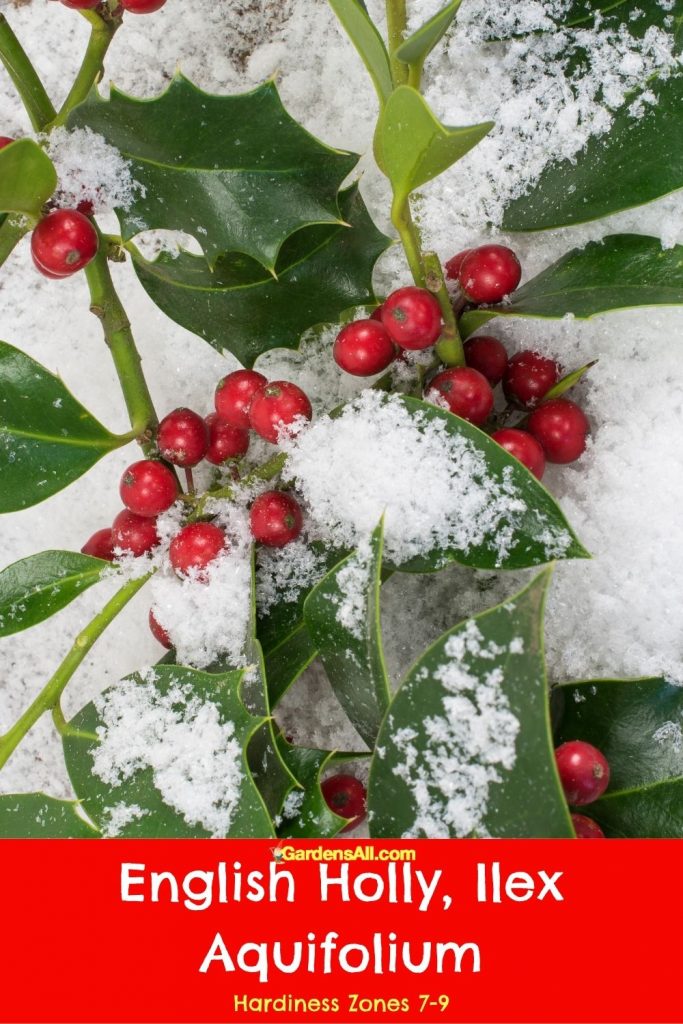
Glory of the Snow, Chionodoxa siehei, Winter-Blooming Zones 3-8
These gorgeous bulbous perennial flowers bloom in the late winter or early spring in zones 3 through 8. They come in shades of pink, white, purple and blue flowers with a blue/green foliage color.
Many people choose to add these flowers to their garden because they are beautiful, low maintenance, suitable for containers, and make lovely floral arrangements. They are usually used as vase-style cut flowers, primarily used to brighten up homes in the wintertime.
You can plant Glory of the Snow indoors or outdoors and blooms in the spring. It is a perennial that can be propagated by division or seed (bulb).
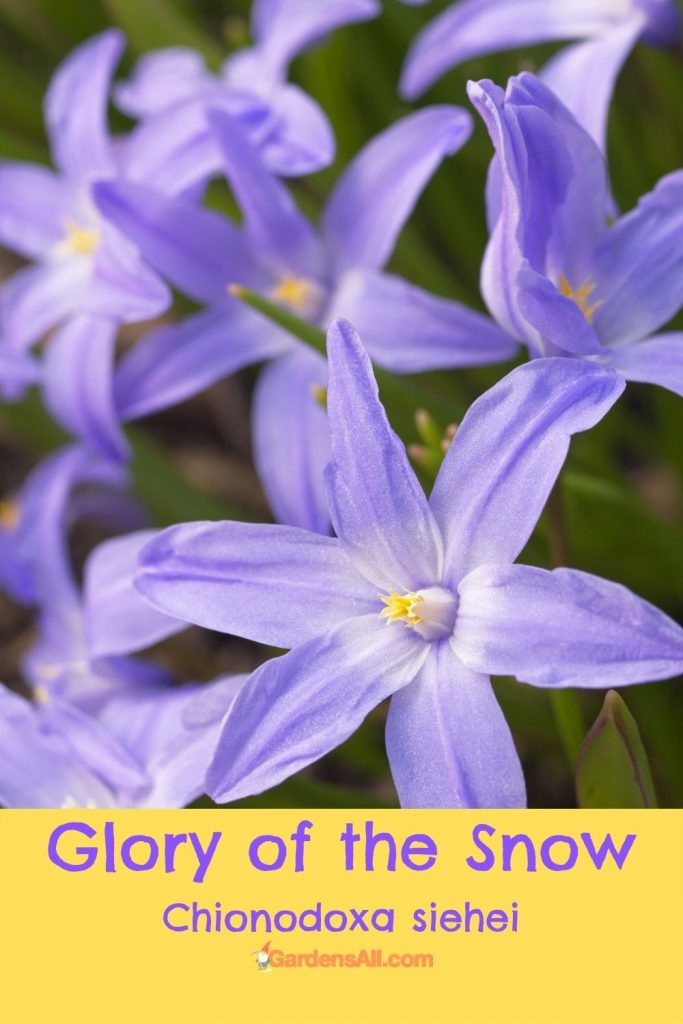
Hellebores, Helleborus x Hybridus, Zones 4-8; Evergreen 6-9
This dramatic little flower blooms from February until May in Zones four through nine. It zones six to nine, Hellebore is an evergreen, and they grow wild in our woods in NC zone 7a.
Hellebores can be started indoors or outdoors; many gardeners choose to keep them in garden boxes or hanging baskets that sit at a higher elevation. These plants produce gorgeous blooms that face downward, so keeping them elevated makes it easier to see their flowers.
These perennials get their name from their rose-like flowers that bloom around Lent, a day of Christian observance.
While stunning plants, Hellebores are toxic to pets and humans, so keep them out of reach, or monitor them to see if they’re inclined to be interested in them.
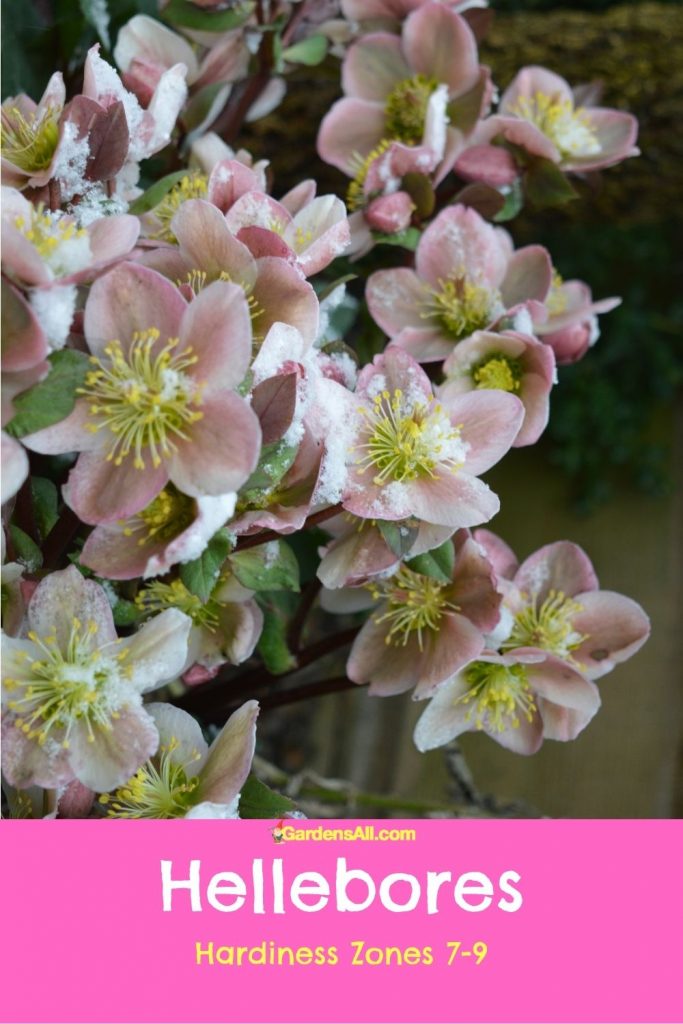
Nemesia Strumosa, Scrophulariaceae – Winter-Blooming in Zones 9-10
Nemesia is a tough little annual plant that thrives in zones two through ten in season or zones 9-10 for winter flowers. This gorgeous flower adds wonderful colors to landscapes and flower pots in various shades of white, red, pink, orange, and blue. If you’re in hardiness zones 9-10, Nemesia will make a colorfully cheerful winter carpet.
They reach to be about two feet tall and bloom in late winter, spring, and early summer at full maturity.
It is best to start Nemesia indoors but transplant them quickly because they do not move very well.
The Nemesia plant is a symbol of friendship in many cultures.
We’ve included Nemesia in our flowers that bloom in spring article but adding this one here for those in USDA Grow Zones 9-10 to consider.
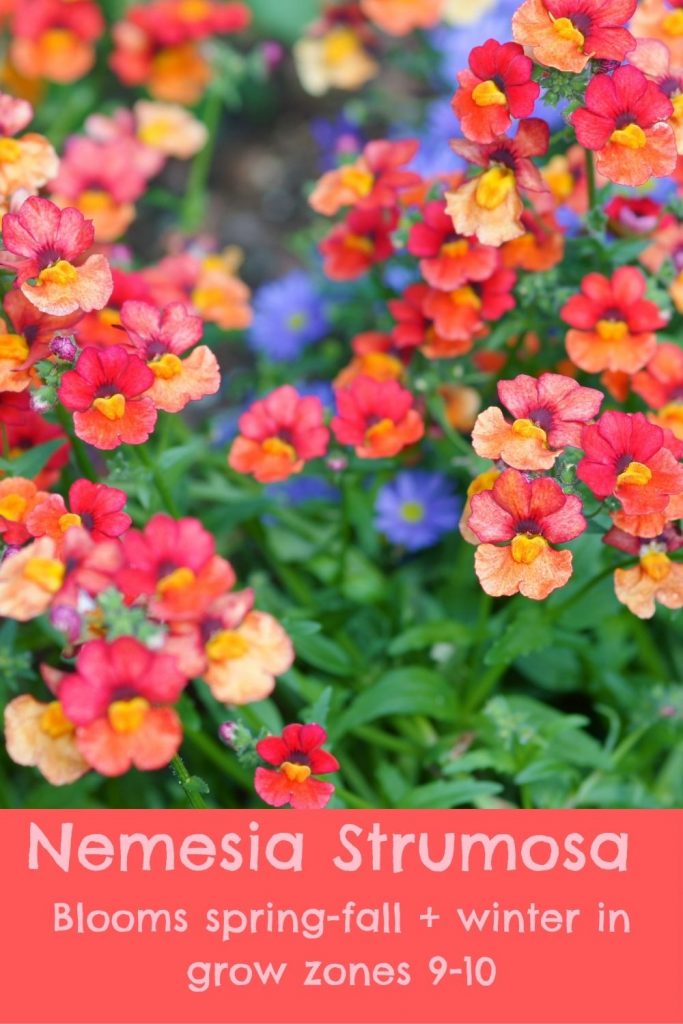
Pansies, Viola x Wittrockiana – Winter-Blooming in Zones 6-13
Pansies, also known as viola x wittrockia, are gorgeous hybrid flowers that come in vast shades of white, purple, pink, red, blue, and yellow.
This little plant usually only grows eight to nine inches tall but tolerates an extensive range of temperatures. Zones 6 and up are the best place to plant this flower, for temperatures ranging from 40-70°F / 4-21°C.
These hardy tiny flowers are perennials with shorter lifespans; some people call them biennials. Luckily, they are prolific and produce many more seeds that may volunteer to come up independently. However, we’ve placed these under the annual flowers because many people pull them up once they’re spent in order to plant other seasonal flowers.
Pansies can bloom for eight months of the year, from September until May, providing starkly beautiful and very vibrant colors for your garden. In significantly colder regions, though, pansies may not bloom in the wintertime.
While pansies grow easily from seed and can be started indoors or outdoors, they do take some time to mature; if you intend to begin your pansies indoors, do so about twelve weeks before your last frost date.
Garden centers love to grow pansies because they are easy to care for in a greenhouse, produce bright, unique flowers, and tend to be disease and insect resistant.
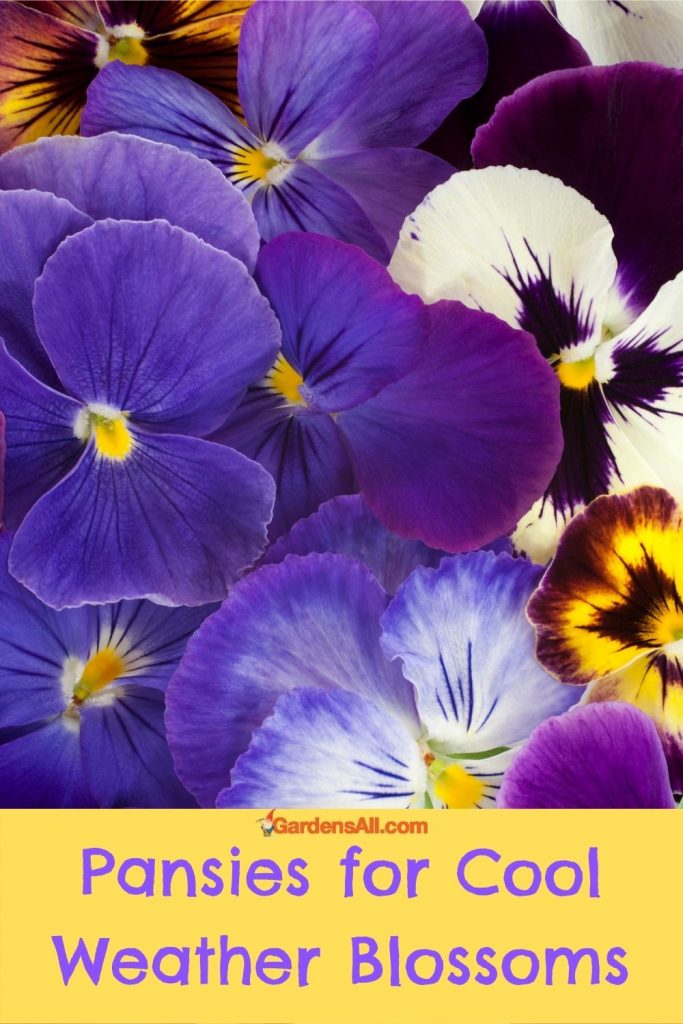
Pheasant’s Eye, Adonis Amurensis – Winter-Blooming in Zones 3-7
Good for full sun to light shade, this tough little flower — true to its Russian heritage — can survive colder temperatures. The blossoms close up in colder temps and open on warmer days in the winter sun and on early spring days.
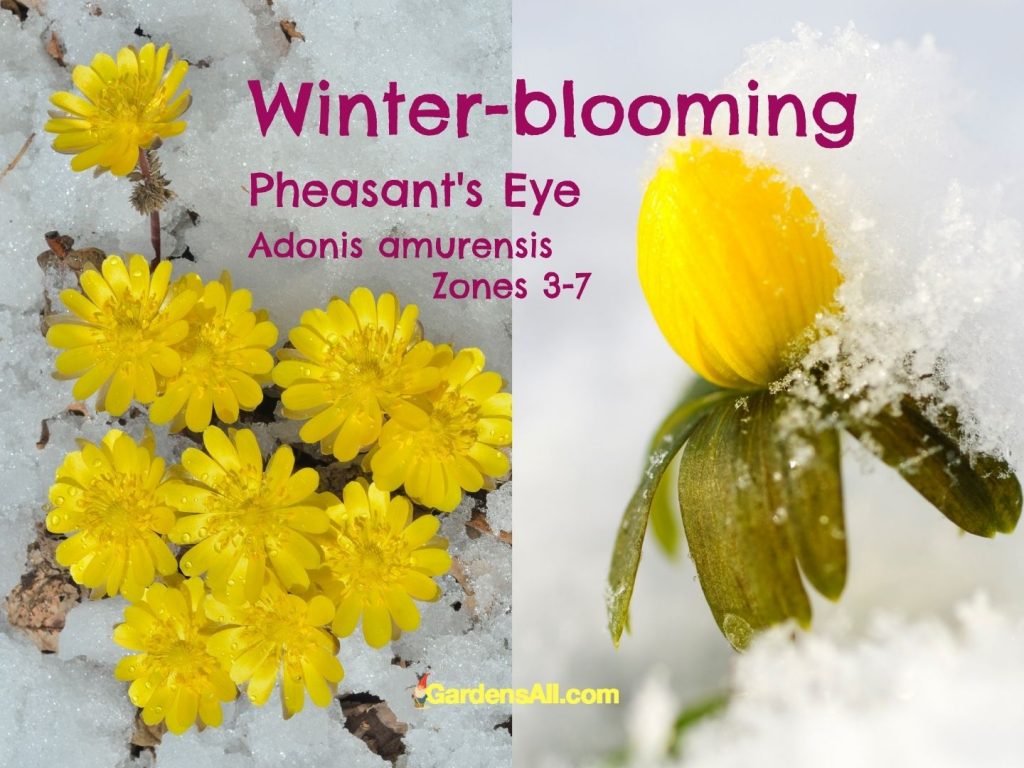
Philippine Violet, Barleria Cristata, Winter-Blooming in Zones 9-11
This funnel-shaped flower blooms in December and is an evergreen perennial shrub that grows best in zones nine through eleven but can typically survive in zones 8-12.
The Philippine Violet is easy to propagate from stem cuttings, from seed, and is a prolific producer. It may be started indoors, in a greenhouse, or directly outdoors if you don’t wish for this plant to spread, deadhead immediately after their season to prevent volunteer seedlings.
People in Thailand use the Philippine Violet as an herbal remedy; it purifies blood and acts as a tonic and diuretic.
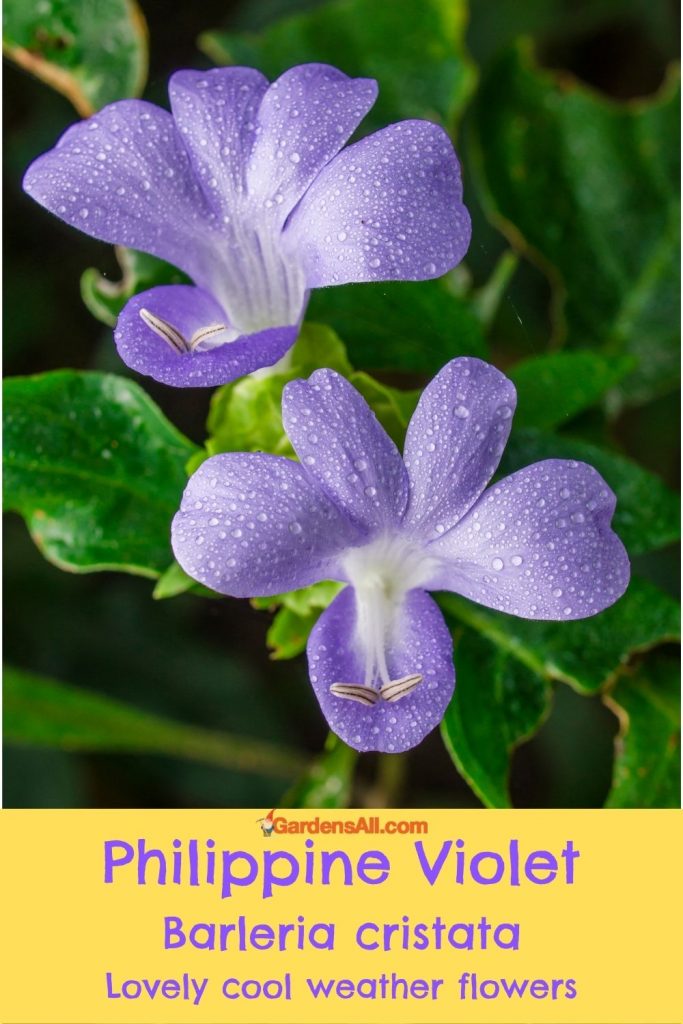
Pieris, Pieris Japonica, Zones 5-8
These white winter blooming flowers are an evergreen perennial shrub that grows to be up to twelve feet tall and eight feet wide. They are best planted in the fall directly into outdoor soil and flowers in late winter for approximately two weeks.
The leaves and branches are poisonous, making them deer resistant.
Pieris was commonly planted in tea gardens near shrines and temples in ancient Japan. The wood was used for charcoal, and the branches became alcove posts in tea rooms. It was known as “asebi.”
Pieris Japonica comes in shades of yellow, white, pink, tan, red, and even a dull green.
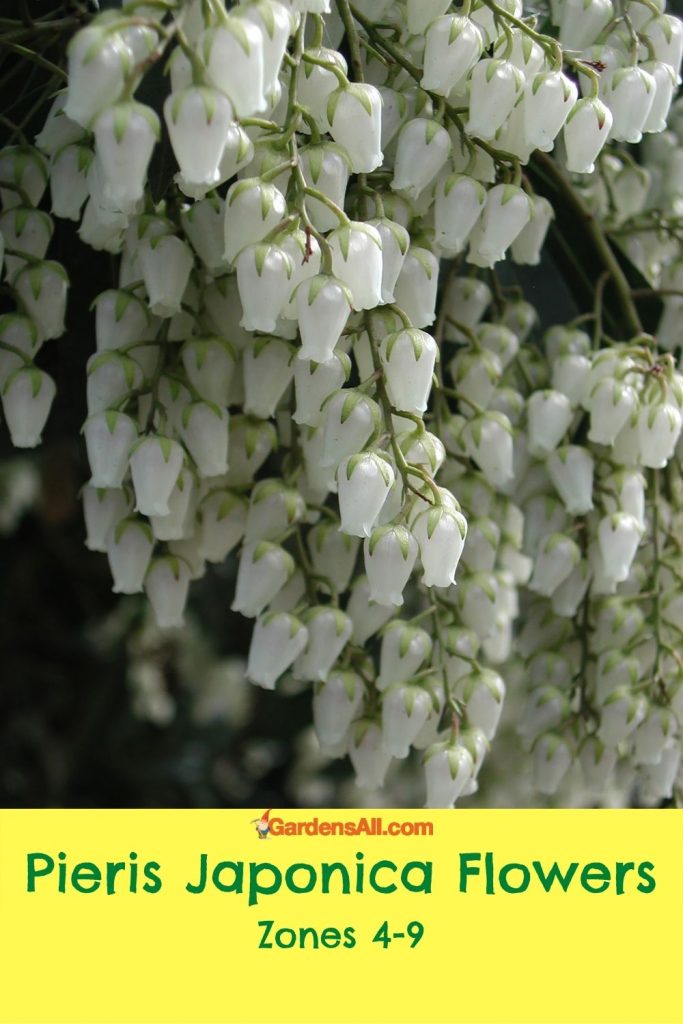
Snowdrop, Galanthus Nivalis, Zones 3-7
This petite little flower is native to Europe and southwest Asia but is frequently grown in American gardens.
Snowdrops are resistant to pests and diseases, but they are poisonous for pets and humans, especially children. When working with these flowers, even just the bulb of these flowers, always wear gloves to prevent skin irritation.
Snowdrops are best planted directly into the soil rather than started indoors because they are perennial bulb plants. These pretty flowers multiply quickly on their own. Simply lift, divide, and replant in the fall.
Snowdrops bloom in the late winter or early spring, January through April.
Galantamine is a naturally occurring chemical in Snowdrops and is used to treat some of the symptoms of Alzheimer’s disease.

Sweet Pea, Lathyrus odoratus, Zones 5-8
One of the most popular and highly favored cottage garden flowers, Sweet Pea’s has gorgeous coloring and sweet-smelling fragrance.
Available in many shades of purple, pink, blue, and white flowers, Sweet Pea is an annual plant best to start directly outside after being scarified. To scarify the seeds, simply nick the seed coating or soak seeds in water indoors for a few hours to aid germination. If soaking, plant them immediately afterward, without letting them dry out.
Sweet peas bloom in late winter all the way through early summer.
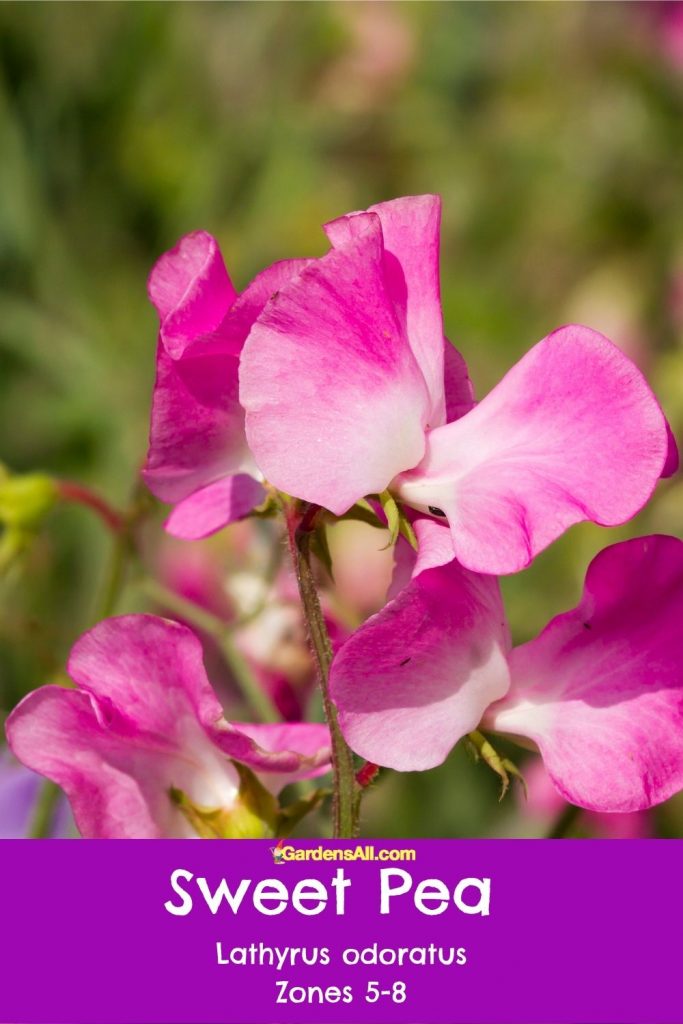
Winterberry Holly, Ilex Verticillata, Zones 3-9
Also known as holly berry, black alder, false alder, or fever bush, the Winterberry Holly is a deciduous, perennial shrub with bright and vibrant red or orange berries.
Winterberry grows to be three to fifteen feet tall and wide at maturity. This bush blooms in June and July and later produces big bunches of quarter-inch-diameter berries in the late summer and fall.
These berries stay on the branch throughout the winter. The leaves, however, are shed at the end of summer, giving gardeners a beautiful, unobstructed view of the berries for the winter. They look especially striking when coated in fresh white snow.
Native Americans used the Winterberry, as they called it the fever bush, to cure fevers. When ingested, Winterberry causes nausea and low blood pressure.
Now, Winterberries are primarily used to brighten up gardens and wintertime floral arrangements. They are also added to greenery, Christmas trees, and wreaths.

Winter Jasmine, Jasminum Nudiflorum, Zones 6-10
These bright yellow scrambling flowers will cover your ground, trellis, wall, or fence with just a little assistance and training. Winter Jasmine shrubs can grow fifteen feet tall if supported or seven feet tall if left unsupported.
A deciduous perennial belonging to the olive family, Winter Jasmine blooms in January, making it a perfect winter garden addition.
Mealybugs and aphids are some of the only pests that appear to harm these plants.
Start Winter Jasmine indoors by soak the seeds in water for 24 hours, then plant them into your seed starter tray.[#affiliatelink] Water thoroughly, and do not plant outdoors until two pairs of leaves have appeared. This may take a few months.
Interestingly enough, Winter Jasmine does not have a scent like other Jasmine, but makes up for it in winter blooms.
Good as a potted plant, Winter Jasmine containers can grow indoors or outdoors. Replant once every two years to aid the plant’s root growth to prevent it from becoming root-bound.

Roses That Bloom In Winter
International Herald Tribune, Rosa International Herald Tribune, Zones 6-9
These double petaled mauve purple flowers will brighten any garden up with these abundant cluster blooms.
This strong-smelling rose blooms in the winter and is a deciduous perennial that reaches up to five feet tall at maturity.
International Herald Tribune was only recently created in 1984 by hybridizing the following rose varieties: (Blue Moon x (Lilac Charm x Sterling Silver) x Orangeade x Lilac Charm) x (Orange Sensation x Allgold) x Rosa californica). It now has seven child plants of its own.
You can plant this rose outside in warmer climates; For most of North America, it is best grown indoors or potted in a container and carried indoors for the cold months.

Gloire des Rosomanes, Rosa Gloire des Rosomanes, Zones 7-10
This bright red rose can be trained to climb and grow up to fifteen feet tall!
First bred by Plantier in France in 1825, this is a popular rose to grow in the winter because of its glorious color and gentle fragrance. This perennial blooms year-round, even in the winter, creating gorgeous large, semi-double roses.
It can be grown indoors or outdoors in zones seven through ten.
Here’s a better photo of the Rosa Gloire des Rosomanes and more photos here.
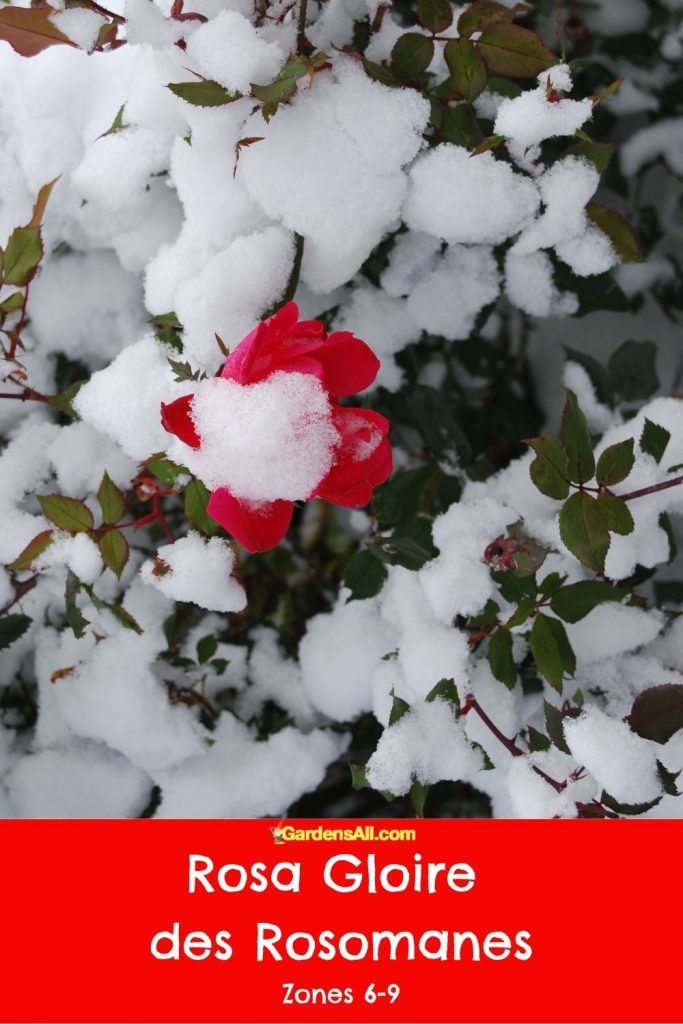
“With a few flowers in my garden, half a dozen pictures and some books, I live without envy.”
~Lope de Vega, Spanish poet, playwright, novelist, 1562-1635
Find lovely flowers that bloom in fall here.
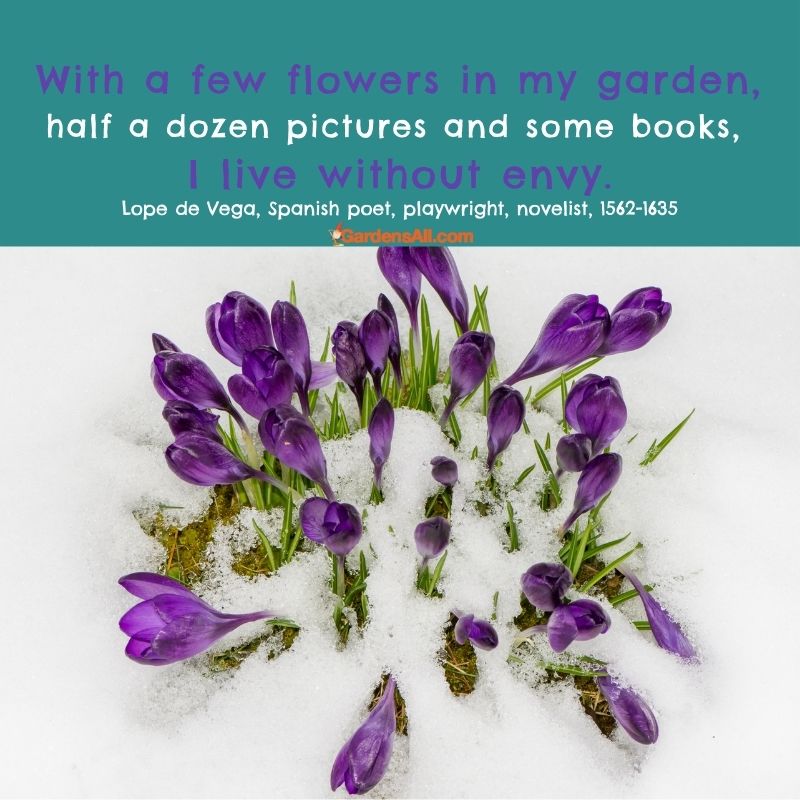
I’m LeAura Alderson, a garden, herb and plant enthusiast with a passion for discovering the many edible and medicinal benefits of the plants all around us, including the weeds! I’m a writer, editor and media publisher for our family of websites.
While I was certified in fitness and life coaching, I am NOT a health practitioner. However, I’m a lifelong health enthusiast, with a keen interest in healthy, organic foods and making home remedies and the content we share is from our own experience and usage as well as that extracted from scientific research so that you can explore further on your own.
Always seek the advice and guidance of your health practitioners first and foremost.
As a family we’re steadily expanding our gardening, experimentation and knowledge around all things gardening, edible landscaping, fresh organic foods and self sustainability with farming in our future. I also own and manage iCreateDaily.com, a site all about transformation through creation, and the power of positivity, optimism and mindset.

